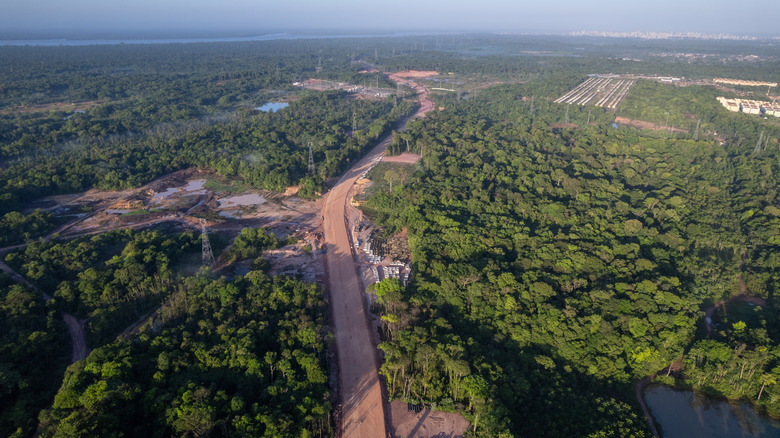Animals In The Amazonian Forests Are Relying On Our Walkways
Artificial walkways in the Amazon rainforest aren't only being used by researchers and tourists to safely traverse the canopy. It turns out that these passages are also convenient for the local wildlife. A series of camera traps monitored one walkway in particular, and found that animals used it 41 times over a course of three weeks.
This research was published in the journal Neotropical Biology and Conservation under the title "Arboreal mammal use of canopy walkway bridges in an Amazonian forest with continuous canopy cover." The study was centered around how tree-dwelling mammals in the Amazon rainforest of Peru use different layers of the forest canopy. The research was helmed by Justin Santiago of Miami University, and Lindsey Swierk of Binghamton University.
When these bridges were not in use by humans, animals claimed them for their own. They offer a fast, safer way to get to various sections of the rainforest. The research team hopes that the insights from their publication can be used in future conservation efforts. Specifically, it can be implemented to create similar bridges exclusively for animals that help them travel between segmented parts of the forest. These segmentations are often the result of deforestation or habitat loss from climate change problems like the Amazon's record-breaking drought. Bridges like these will reduce the likelihood of animals crossing busy roads.
What the Amazonian forest research uncovered
Previous research shows that canopy bridges can help animals move safely between forest patches, however, little is known about how mammals use artificial bridges in the Neotropics, which range from Mexico to the tip of South America. As deforestation and habitat fragmentation increase — which could contribute to a sixth mass extinction event — understanding these behaviors is vital for conservation. The research team wanted to provide data that can guide the design of effective canopy bridges to reconnect the segmented habitats of these animals.
The researchers used four camera traps for 21 days at the Amazon Conservatory for Tropical Studies Canopy Walkway. The walkway itself consists of interconnected platforms and bridges. During these 21 days, the cameras caught sloths, porcupines, opossums, monkeys, and Neotropical spiny rats using the walkways. The most common sighting was the sloth, specifically the Linnaeus' two-toed sloth that was seen 14 times.
This study found that the animals were most active on the walkways between 7 and 9 p.m. The peak activity coincided with higher temperature and humidity. The publication hypothesizes this is due to a better foraging time, social behaviors, and other biological factors that may make the evening hours appealing.
Why this Amazonian research is important
The publication highlights that this research has practical conservation purposes. By studying what animals use the walkways and when, these can be recreated in the future. Future walkways would be for animals only with the purpose of connecting fragmented sections of forest. These could be built to help animals traverse over human populated areas, roads where cars are a danger, and sections of the forest that have been lost.
Since climate change is driving the already shrinking populations of animals even smaller, these types of bridges can be vital to protecting species. The researchers believe future studies can expand upon what they found. Keeping the camera traps up longer could identify more species that use them. These walkways could also be studied in different seasons to see how that impacts their utilization.
The study is a reminder that conservation doesn't always require sweeping interventions. Sometimes, it's about meeting animals where they are. By mimicking the canopy connections nature once provided, these walkways offer a lifeline for wildlife and a blueprint for how humans can coexist more thoughtfully with the natural world.


